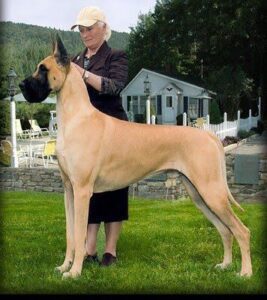
Welcoming a furry friend into your home is a joyous occasion, and the Australian Shepherd stands out as a popular choice for many families. In this comprehensive guide, we’ll delve into the fascinating world of dog breeds for Australian Shepherds, providing you with essential facts and information to ensure a harmonious and informed partnership.
1. Understanding the Australian Shepherd Breed:
1.1 Origins and History:
The Australian Shepherd, despite its name, originated in the United States. Developed by Basque shepherds who migrated from Australia, these intelligent and versatile dogs have a rich history rooted in herding and ranch work.
1.2 Physical Characteristics:
Known for their striking appearance, Australian Shepherds typically have a medium-sized, well-balanced build. Their distinctive merle coat, expressive eyes, and bobbed tail contribute to their charming looks.
1.3 Temperament and Personality Traits:
Australian Shepherds are renowned for their intelligence, loyalty, and agility. They thrive on mental and physical stimulation, making them excellent companions for active individuals or families.
2. Popular Dog Breeds that Complement Australian Shepherds:
2.1 Border Collie:
- Physical Characteristics:
- Medium-sized, athletic build
- Double coat with various color combinations
- Temperament:
- Highly intelligent, trainable
- Energetic and agile
2.2 Golden Retriever:
- Physical Characteristics:
- Large, muscular build
- Dense, water-repellent coat
- Temperament:
- Friendly, gentle, and patient
- Intelligent and eager to please
2.3 Siberian Husky:
- Physical Characteristics:
- Medium to large size, well-furred coat
- Distinctive facial markings and erect ears
- Temperament:
- Outgoing, mischievous, and friendly
- Energetic and social
2.4 Shetland Sheepdog:
- Physical Characteristics:
- Small to medium size with a thick double coat
- Elegant appearance with a distinctive mane
- Temperament:
- Intelligent, loyal, and eager to please
- Responsive and easy to train
3. Training and Socialization Tips for Australian Shepherds:
3.1 Effective Training Techniques:
- Utilize positive reinforcement
- Incorporate mental stimulation through puzzle toys
- Consistency is key in training sessions
3.2 Socialization Importance:
- Expose your Australian Shepherd to various environments
- Encourage positive interactions with people and other dogs
- Gradual exposure to new stimuli helps build confidence
3.3 Common Behavioral Challenges and Solutions:
- Address separation anxiety through gradual departures
- Provide sufficient physical and mental exercise
- Seek professional training for specific behavioral concerns
4. Health and Wellness: Ensuring a Happy Australian Shepherd:
4.1 Common Health Issues in Australian Shepherds:
- Collie Eye Anomaly (CEA):
- A genetic eye condition that can range from mild to severe
- Hip Dysplasia:
- Abnormal development of the hip joint, leading to arthritis
- Epilepsy:
- Recurrent seizures without a specific cause
4.2 Nutritional Guidelines:
- Choose high-quality, breed-specific dog food
- Monitor portion sizes to maintain a healthy weight
- Provide a balanced diet rich in protein and essential nutrients
4.3 Exercise Requirements for a Healthy Pup:
- Engage in daily physical exercise, including walks and playtime
- Mental stimulation through puzzle toys and interactive games
- Tailor exercise routines to the individual needs of your Australian Shepherd
5. Choosing the Right Dog Breed: Factors to Consider:
5.1 Matching Energy Levels:
- Assess your lifestyle and energy levels
- Consider the activity requirements of both breeds
- Ensure compatibility in exercise preferences
5.2 Consideration for Living Spaces:
- Evaluate your living environment, including space and yard size
- Confirm that both breeds are suitable for indoor living
- Adaptability to climate and weather conditions
5.3 Allergies and Sensitivities:
- Check for potential allergies in family members
- Choose breeds with hypoallergenic traits if necessary
- Visit a local shelter to spend time with the chosen breeds
6. Australian Shepherd Mix Breeds: A Blend of Characteristics:
6.1 Aussie-Golden Retriever Mix:
- Physical Characteristics:
- Medium to large size with a wavy or curly coat
- Golden Retriever’s friendly expression
- Temperament:
- Intelligent, friendly, and eager to please
- Social and adaptable
6.2 Aussie-Labrador Retriever Mix:
- Physical Characteristics:
- Medium to large size with a short, dense coat
- Labrador Retriever’s distinctive otter tail
- Temperament:
- Outgoing, affectionate, and family-friendly
- Energetic and trainable
6.3 Aussie-German Shepherd Mix:
- Physical Characteristics:
- Medium to large size with a dense double coat
- German Shepherd’s iconic saddle pattern
- Temperament:
- Intelligent, protective, and loyal
- Eager to learn and work alongside their owner
7. Dog Breeds to Avoid for Australian Shepherds:
7.1 Breeds with Conflicting Energy Levels:
- High-energy breeds may overwhelm Australian Shepherds
- Calmer breeds may not match the Australian Shepherd’s activity level
- Consider breeds with similar exercise needs and temperaments
7.2 Breeds Prone to Dominance:
- Australian Shepherds may exhibit dominant traits
- Avoid breeds with a tendency for dominance or aggression
- Prioritize compatibility in social dynamics between breeds
8. Grooming Tips for Australian Shepherds and Their Companions:
8.1 Maintaining the Australian Shepherd’s Coat:
- Regular brushing to prevent matting and reduce shedding
- Monthly baths using dog-friendly shampoo
- Check ears, eyes, and teeth for cleanliness and health
8.2 Grooming Practices for Mixed Breeds:
- Tailor grooming routines to the coat characteristics of the mix
- Consult breed-specific grooming guidelines
- Regularly check for signs of skin issues, ear infections, or dental problems
9. Adopting vs. Buying: Ethical Considerations:
9.1 The Adoption Process:
- Research local shelters and rescue organizations
- Visit adoption events to meet potential companions
- Consider the benefits of providing a loving home to a rescued dog
9.2 Responsible Breeding Practices:
- Research reputable breeders with a focus on health and temperament
- Ensure breeders prioritize the well-being of the dogs
- Ask for health clearances and genetic testing
10. Conclusion: Building a Lifelong Bond with Your Australian Shepherd
In conclusion, the journey of welcoming an Australian Shepherd into your life is a rewarding endeavor filled with love, joy, and companionship. By understanding the nuances of this remarkable breed and considering compatible companions, you can build a lifelong bond that enriches both your life and that of your furry friend.
Note: This comprehensive guide is crafted as an informative resource, providing insights into the world of dog breeds for Australian Shepherds. It aims to guide prospective pet owners in making informed decisions while ensuring the health, happiness, and well-being of their beloved companions.



